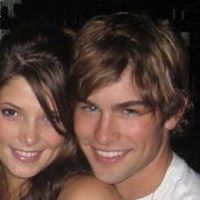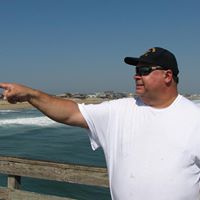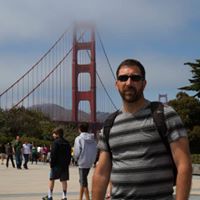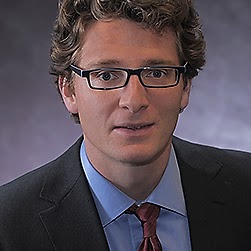David E Schmit
age ~78
from Cincinnati, OH
- Also known as:
-
- David Lwyr Schmit
- David Te Schmit
- David Res Schmit
- David E Smith
- Dave E Schmit
- David E Smyth
- David E Schmitt
- David E Schmidt
- David Esmith
- Lee Hampton
- Phone and address:
-
5076 Palermo Rd, Cincinnati, OH 45244
5132480683
David Schmit Phones & Addresses
- 5076 Palermo Rd, Cincinnati, OH 45244 • 5132480683
- 135 Garfield Ave, Cincinnati, OH 45202 • 5135640684
- 223 9Th St, Cincinnati, OH 45202 • 5135640684
- Montgomery, OH
- 520 Water Works Rd, Fort Thomas, KY 41075 • 8594413282
- 520 Waterworks Rd, Fort Thomas, KY 41075 • 8594413282
Work
-
Company:Frost Brown Todd, LLC
-
Address:201 East Fifth Street, Cincinnati, OH 45202
-
Specialities:Intellectual Property - 40% • Patent Application - 20% • Arbitration - 20% • Trademark Application - 20%
Education
-
Degree:JD - Juris Doctor
-
School / High School:Northern Kentucky University, Salmon P. Chase College of Law
Ranks
-
Licence:Ohio - Active
-
Date:1975
Emails
Lawyers & Attorneys

David Edward Schmit, Cincinnati OH - Lawyer
view sourceAddress:
Frost Brown Todd, LLC
201 East Fifth Street, Cincinnati, OH 45202
5136516985 (Office)
201 East Fifth Street, Cincinnati, OH 45202
5136516985 (Office)
Licenses:
Ohio - Active 1975
Education:
Northern Kentucky University, Salmon P. Chase College of Law
Degree - JD - Juris Doctor - Law
Graduated - 1975
University of Cincinnati
Degree - M.S.E.E
University of Cincinnati
Degree - B.S.E.E
Degree - JD - Juris Doctor - Law
Graduated - 1975
University of Cincinnati
Degree - M.S.E.E
University of Cincinnati
Degree - B.S.E.E
Specialties:
Intellectual Property - 40%
Patent Application - 20%
Arbitration - 20%
Trademark Application - 20%
Patent Application - 20%
Arbitration - 20%
Trademark Application - 20%
Associations:
Cincinnati Patent Law Association - Member
Name / Title
Company / Classification
Phones & Addresses
BMC CORPORATION
Cincinnati, OH
B-N-T INC
Cincinnati, OH
Resumes

Chief Legal Officer
view sourceLocation:
Roswell, GA
Industry:
Industrial Automation
Work:
Trew
Chief Legal Officer
David E Schmit Attorney-At-Law Jan 2018 - Dec 2018
Intellectual Property Consultant
Intelligrated 2015 - 2018
Senior Vice President Corporate Intellectual Property
Frost Brown Todd 1976 - 2015
Partner, Intellectual Property Attorney
Melville Strasser Foster & Hoffman 1976 - 1979
Associate Attorney
Chief Legal Officer
David E Schmit Attorney-At-Law Jan 2018 - Dec 2018
Intellectual Property Consultant
Intelligrated 2015 - 2018
Senior Vice President Corporate Intellectual Property
Frost Brown Todd 1976 - 2015
Partner, Intellectual Property Attorney
Melville Strasser Foster & Hoffman 1976 - 1979
Associate Attorney
Education:
University of Cincinnati
Bachelors, Bachelor of Science In Electrical Engineering, Bachelor of Science, Electrical Engineering Sycamore High School (Cincinnati, Ohio)
Northern Kentucky University—Salmon P. Chase College of Law
Doctor of Jurisprudence, Doctorates University of Cincinnati
Master of Science, Masters, Master of Science In Electrical Engineering, Electrical Engineering
Bachelors, Bachelor of Science In Electrical Engineering, Bachelor of Science, Electrical Engineering Sycamore High School (Cincinnati, Ohio)
Northern Kentucky University—Salmon P. Chase College of Law
Doctor of Jurisprudence, Doctorates University of Cincinnati
Master of Science, Masters, Master of Science In Electrical Engineering, Electrical Engineering
Skills:
Collaborate Effectively on Complex Business and Technical Problems
Focus on Practical Business Solutions To Legal Issues
Consistently Demonstrate A Positive Can Do Approach To Problem Solving
Innovation and Ip
Generate Trust and Confidence In the Companys Legal Operations
Train and Mentor Support Staff and Subordinates
Build and Lead Effective and Collaborative Teams
Focus on Practical Business Solutions To Legal Issues
Consistently Demonstrate A Positive Can Do Approach To Problem Solving
Innovation and Ip
Generate Trust and Confidence In the Companys Legal Operations
Train and Mentor Support Staff and Subordinates
Build and Lead Effective and Collaborative Teams
Certifications:
Licensed Atorney-At-Law
Licensed Patent Attorney
Admitted To Practice Before the Supreme Court of the United States; Supreme Court of Ohio; Courts of Appeals For the Fourth, Fifth, Sixth and Federal Circuits; U.s. District Courts For the Southern District of Ohio, Western District of Michigan, Others.
Licensed Patent Attorney
Admitted To Practice Before the Supreme Court of the United States; Supreme Court of Ohio; Courts of Appeals For the Fourth, Fifth, Sixth and Federal Circuits; U.s. District Courts For the Southern District of Ohio, Western District of Michigan, Others.

David Schmit
view source
David Helen Schmit
view source
David Candi Schmit
view source
David Schmit
view sourceWork:
Insider Louisville
Principal
Frost Brown Todd
Specialized Medical Practice
Frost Brown Todd
Principal
Frost Brown Todd
Member and Attorney
Principal
Frost Brown Todd
Specialized Medical Practice
Frost Brown Todd
Principal
Frost Brown Todd
Member and Attorney

David Schmit
view source
David Schmit
view sourceLocation:
United States
Vehicle Records
-
David Schmit
view source -
Address:520 Water Works Rd, Fort Thomas, KY 41075
-
VIN:5J6YH28717L006238
-
Make:HONDA
-
Model:ELEMENT
-
Year:2007
Medicine Doctors

David Roger Schmit
view sourceSpecialties:
Internal Medicine
Education:
The University of Texas at San Antonio (2008)
Us Patents
-
Jet Aircraft And/Or Missile Plume Simulator
view source -
US Patent:41737776, Nov 6, 1979
-
Filed:Jun 1, 1977
-
Appl. No.:5/802549
-
Inventors:David E. Schmit - Cincinnati OH
Jon C. Richmond - Cincinnati OH -
Assignee:Cincinnati Electronics Corporation - Cincinnati OH
-
International Classification:F21V 3300
-
US Classification:362253
-
Abstract:The intensity and spectral content of a jet aircraft and/or missile plume is simulated with a xenon lamp that derives an optical beam which propagates through a filter. The filter prevents optical energy in the visible light region from propagating through it, to prevent eye damage, and enables an output beam to be derived that simulates the intensity and spectral content of the plume. The lamp is normally maintained in a keep-alive status, and its beam power is increased to simulate sudden changes of plume intensity. The beam is selectively passed and blocked by a shutter downstream of the filter to simulate plume presence and absence. The distance between the simulated plume and a target is simulated by controlling the opening of an iris in the beam path. The lamp, filter and drive mechanism for the shutter are cooled by air drawn into a housing by a fan and by fins inside of the housing. The fins are in dull black, radiation absorbing, optical energy trapping structures.
-
Apparatus For Distinguishing Time Varying Analog Signals
view source -
US Patent:39719219, Jul 27, 1976
-
Filed:Jan 13, 1975
-
Appl. No.:5/540604
-
Inventors:David E. Schmit - Cincinnati OH
Frank L. Wedig - Cincinnati OH -
Assignee:Cincinnati Electronics Corporation - Cincinnati OH
-
International Classification:G01J 342
G01J 308 -
US Classification:23515135
-
Abstract:An optical scanner having a narrow instantaneous field of view optically scans an entire field of view to determine if a particular source of optical radiation is in the field of view. A first detector responds to energy of a source imaged by the scanner and derives a first signal having an amplitude versus time variation that is a convolution of dispersed spectral energy from the source. A second detector, displaced by a predetermined distance from the first detector, responds to substantially only one predetermined wavelength of the energy of the imaged source. In response to the energy from the second detector being above a predetermined amplitude, a waveform recognition network responsive to the first signal is enabled. The recognition network includes a circuit for detecting the amplitude of the peak value of an initial undulation of the first signal. In response to the detected peak being above a threshold value, the amplitude of the first signal is compared at a plurality of different time intervals following the initial peak with predetermined maximum and minimum percentages of the detected peak value.

David Schmit
view source
David Schmit
view source
David Schmit
view source
David Schmit
view source
David Schmit
view source
David Schmit
view source
David L. Schmit
view source
David Schmit
view sourceYoutube
Plaxo

David Schmit
view sourceHutchinson, MN
Classmates

David Schmit
view sourceSchools:
Moorcroft High School Moorcroft WY 1970-1974
Community:
Kent Petersen, Robert Ekwall, Brenda Huseby, Michele Reich, Tina Rosenbaum

David Schmit
view sourceSchools:
University Of Wisconsin Platteville WI 1972-1976
Community:
Othman Ismail, Theia Barrette

David Schmit
view sourceSchools:
Moorcroft High School Moorcroft WY 1970-1974
Community:
Kent Petersen, Robert Ekwall, Brenda Huseby, Michele Reich, Tina Rosenbaum

David Schmit
view sourceSchools:
Pine Crest High School Ft. Lauderdale FL 1968-1972
Community:
Lynn Pangerl, Shane Cox, Winthrop Morgan

David Schmit
view sourceSchools:
Steinauer High School Steinauer NE 1954-1958
Community:
Ronnie Buman, Lawrence Obrist, Jerry Obrist, Arlene Vrtiska, Ruth Gyhra, Betty Vrtiska, Louis Wenzl, Joann Gyhra, Frannie Gyhra, Jerri Howse, Peggy Wagner

David Schmit
view sourceSchools:
Watertown-Mayer Middle School Watertown MN 1974-1978
Community:
Paul Burandt, Terrie Dudek, Russell Tenhoff, Cheryl Fisher, Linda Wartner, Kelly Lopresti, Cindy Dobratz, Bill Windsperger, Zoe Clark, Suzanne Wenberg

David Schmit | Ridgefield...
view sourceMyspace
Flickr
Googleplus

David Schmit

David Schmit

David Schmit

David Schmit
Tagline:
I do stuff with stuff

David Schmit

David Schmit

David Schmit
Get Report for David E Schmit from Cincinnati, OH, age ~78















